Norway Salmon Farming Moves To Cleaner Waters: Indoors
Hundreds of thousands of salmon swim against the current in southeast Norway -- in massive indoor tanks away from the nearest river as the controversial industry increasingly embraces greener land-based facilities.
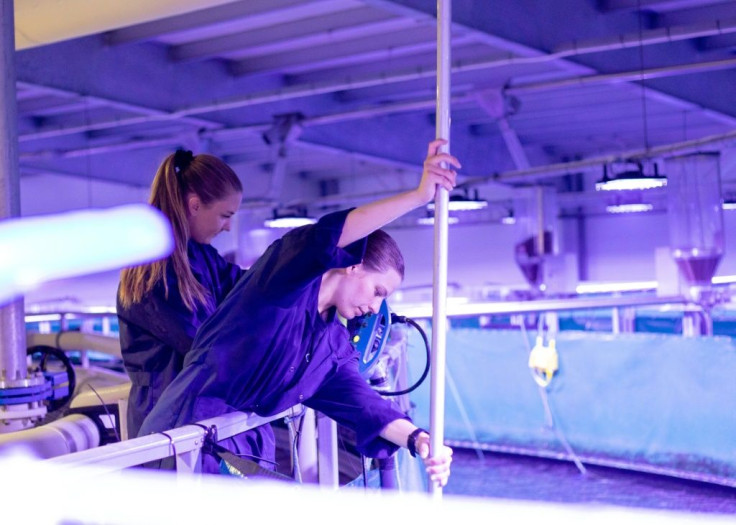
The fish live in two gigantic pools inside an inconspicuous industrial building in Fredrikstad owned by a company that plans to raise salmon in similar settings even further afield, in the United States.
By raising the salmon on land, the industry is attempting to move away from the river or sea cages that have invited criticism over a slew of issues.
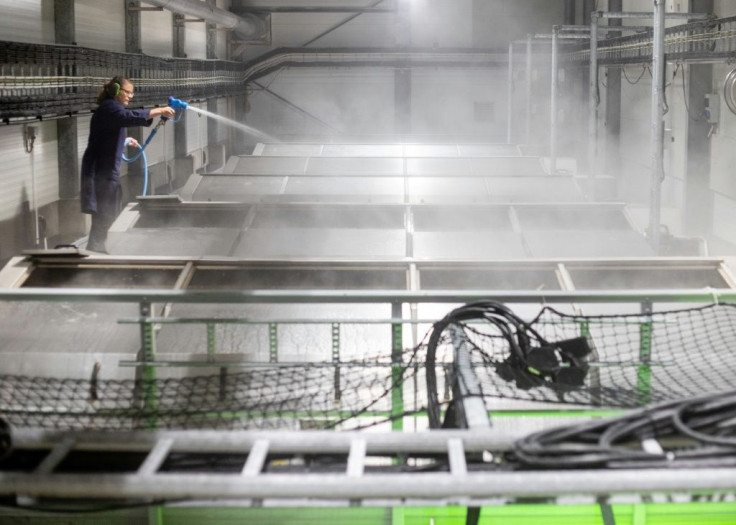
The problems run from costly mass escapes to fish infected with sea lice treated with chemicals to mounds of faeces and feed piling up on the seabed below the farms.
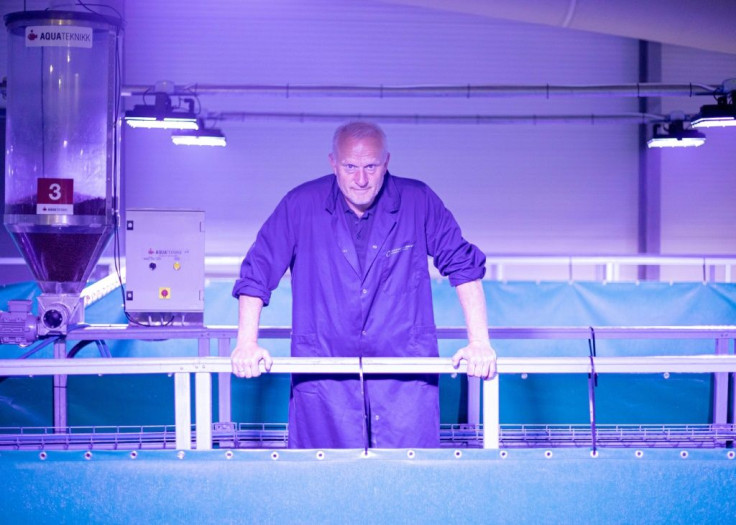
"At sea, you depend on the almighty for many things. In a land-based farm, we are suddenly the all-powerful one," Fredrikstad Seafoods general manager Roger Fredriksen told AFP.
"Here we control everything: temperature, oxygen, pH, CO2," he said as he gave a tour of Norway's first land-based salmon farm, opened in 2019.
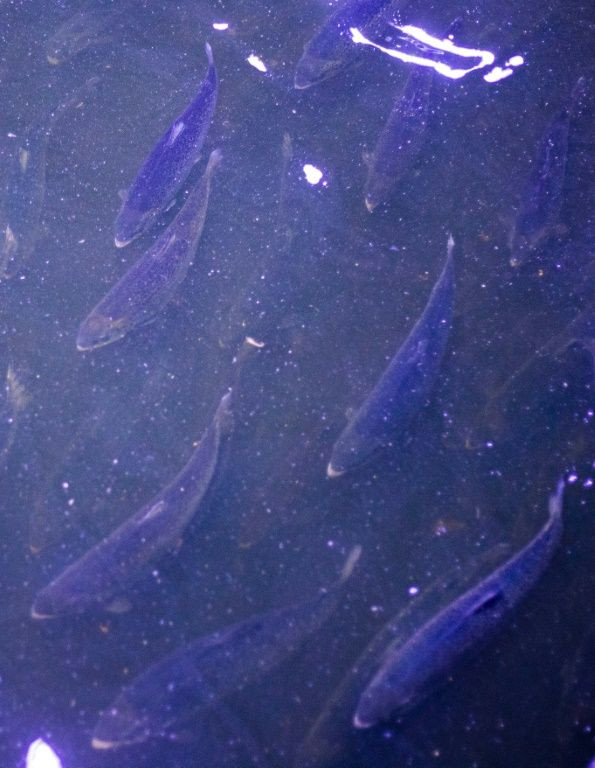
Pumped from the nearby mouth of Norway's largest river, the salt water that feeds the facility is treated with UV light to eliminate viruses and bacteria and afterwards it is cycled and filtered through a loop for repeated use.
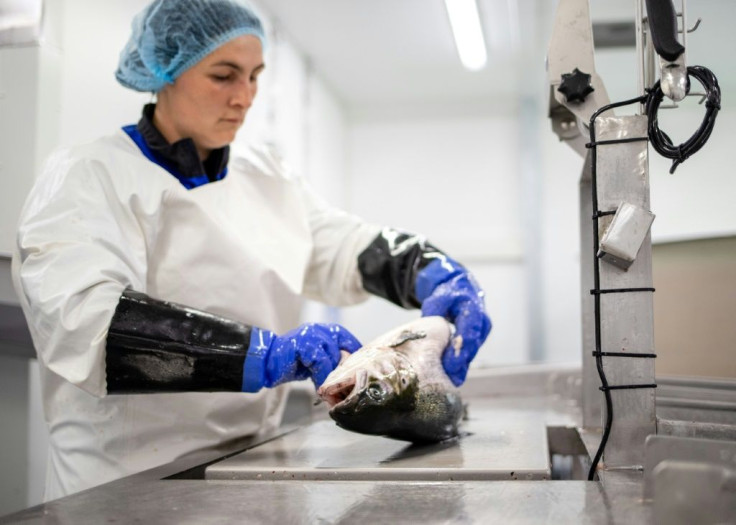
Under a faint blue light, designed to trigger their appetite, the salmon swim day and night as they are fed food pellets from an overhead dispenser.
When they reach between four and five kilograms (nine and 11 pounds), they are harvested.

"The fish have a very firm consistency," said veterinarian Sandra Ledang, head of production at the adjacent abattoir.

"That's because it swims against the current all its life, from the moment it arrives in our facilities until it is slaughtered. It exercises absolutely every day," she added.
As populations are expected to increase, with almost 10 billion mouths to feed by 2050, food production needs to be optimised.
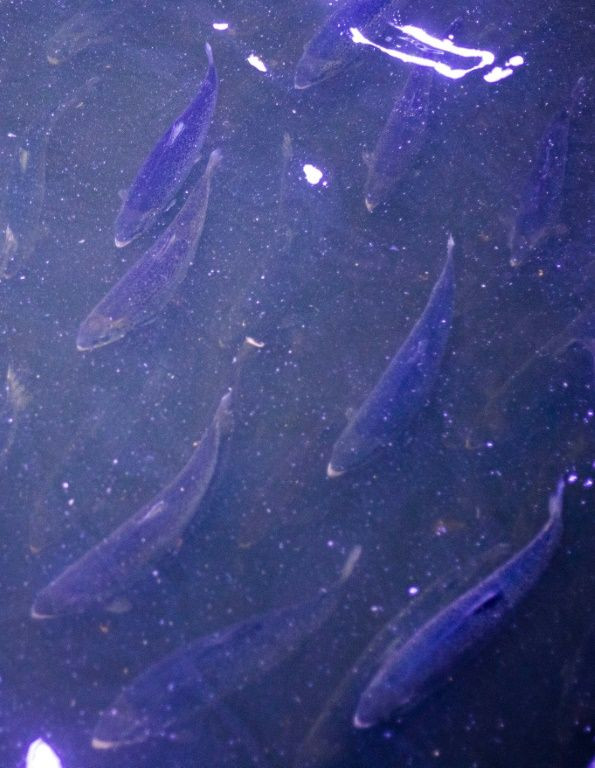
While salmon, which is rich in protein, is still a luxury in many places, it is finding new customers among the growing middle class, particularly in Asia.

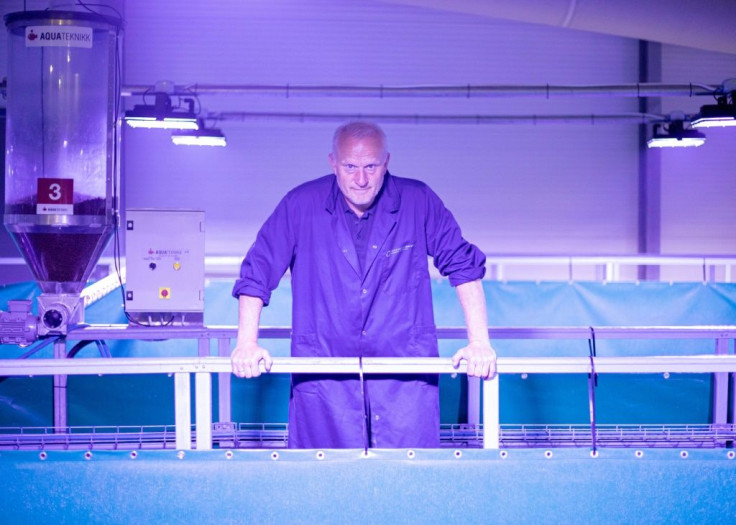
Matthias Halwart, a senior officer in the fisheries department of the UN's Food and Agriculture Organization (FAO), sees clear benefits to recirculating aquaculture systems (RAS), like those tested in Norway.
"You have fully controlled environment for the fish, a very low water use, a very good disease control, a very efficient land use, you can optimize your feeding strategies and you can have a very good proximity with the market," Halwart tells AFP.
Proponents say that although land farms require a lot of energy, their proximity to consumers reduces the use of transportation, making them better for the environment.
Land-based farming projects are already spreading around the world and soon salmon now primarily raised in Norwegian, Chilean, Scottish and Canadian waters will also be produced in Japan, Florida or China.
Nordic Aquafarms, the parent company of Fredrikstad Seafoods, is working on two farms in the United States, one in Maine on the east coast, the other in California on the west coast.
The plan is to use Icelandic salmon roe to raise the fish there.
"The idea is to produce locally. No need to fly salmon over the ocean from one continent to another," Fredriksen said.
However, production costs are still higher, and land-based salmon farming is currently considered more as a complement than a substitute for sea- or river-based farming.
NGO Compassion in World Farming, which campaigns against intensive factory farming, fears that the quest for profits will come at the expense of animal welfare.
"We estimate that the minimum density necessary for profitability is 50 kilograms per cubic metre of water," said Lucille Bellegarde, in charge of agri-food affairs for the French branch of the organisation.
But she lamented that the "average density found in existing systems is more like 80 kilograms per cubic metre" -- eight times denser than what the NGO recommends.
"If the fish are not happy, they don't grow."
© Copyright AFP 2024. All rights reserved.





















